The Cartuja Monastery – The Jewel of Spanish Baroque
Cartuja Monastery in Granada
Cartuja Monastery is one of those places that is always on my to do list. It´s not so easy to get to on public transport. The monument is a way out of the historic centre of Granada. The Monasterio de la Cartuja is on the main road from Granada to Alfacar. (close to the University Campus of Cartuja)
This institution dates back to the 1500´s in Granada and has French origins. Let´s take a closer look at this Carthusian Monastery.
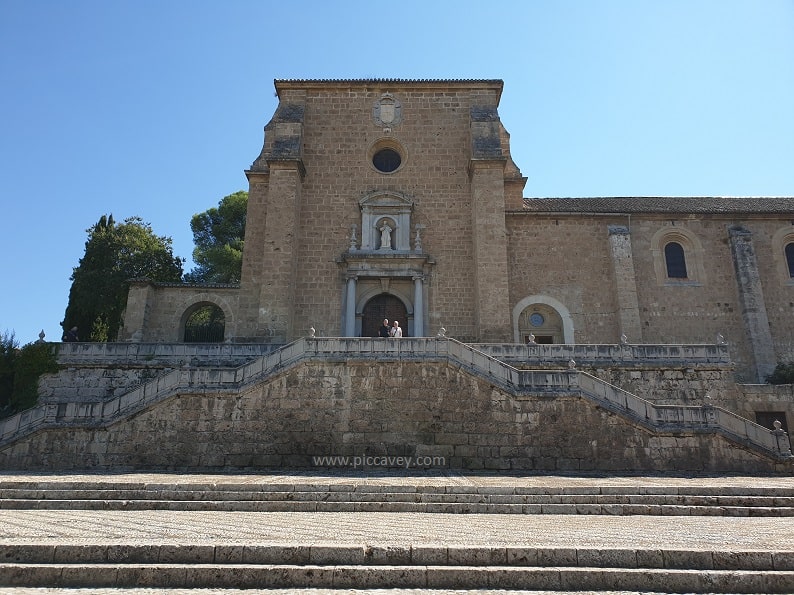
The Carthusian Order
Founded by Bruno of Cologne in June 1084. The Carthusian order began in Saint Pierre de Chartreuse, close to Grenoble France. The building, now the Musée Grande Chartreuse can be visited, in this remote and idyllic corner of the Isere Valley.
As the Carthusian order grew, the monks looked for new monasteries. Bruno of Cologne opened a second Charterhouse in Calabria Italy in the year 1100. After his death in 1101, many other Charterhouses were opened by Carthusians. In Spain, France and beyond.
Granada´s Charterhouse was opened from monks coming from Toledo.
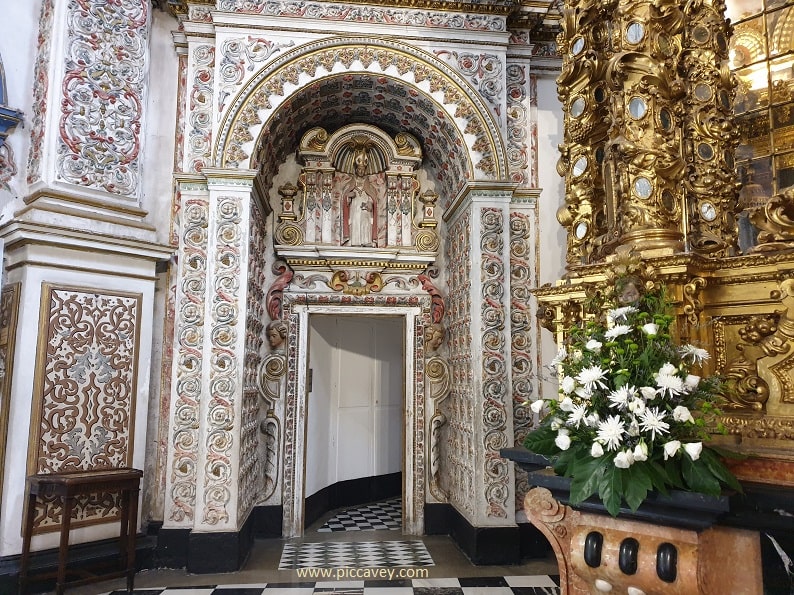
Granada Charterhouse
The Carthusian order was keen on locations away from towns and cities. The monks looked for tranquility and isolation for contemplation and prayer.
Once inside the doorway the first thing I saw was the beautiful cloister.
Following the arrows to guide us through the building the first room was a small area with an altar. This is where the Carthusian monks would have washed before entering the dining room. This site had monks living here for several hundred years, from the early 1500´s right up until 1835.
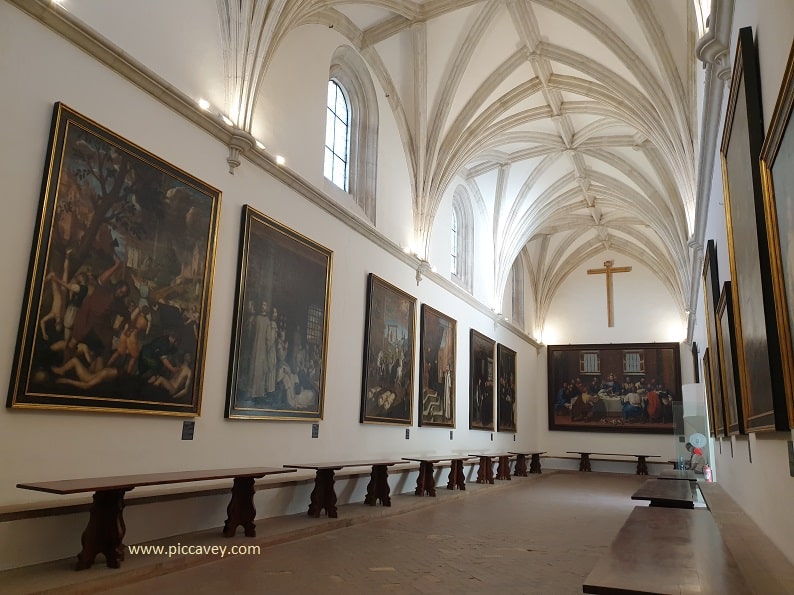
Baroque details
The layout of the building allows all rooms in the Monastery to be accessed from the Cloister. As you walk in the entrance, this outdoor space is the first thing you notice as a visitor.
It calms you even before setting foot upon the smooth timeworn flagstones.
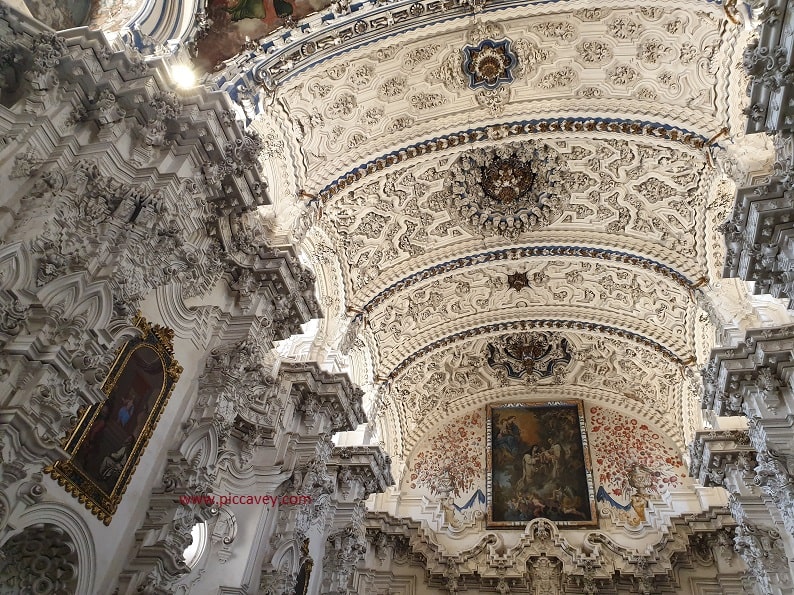
This building is one of the best examples of Spanish Baroque architecture remaining today.
The vestry is particularly stunning.
The intricate plasterwork, wooden carvings, paintings, columns, inlaid materials and marble features ensures that no area left uncovered. Quite a contrast after seeing the sombre exterior of the building.
This Cartuja Monastery has been altered over the years. The rooms where the monks would have slept are no longer there, also the cloister is smaller than it would have been in it´s day.
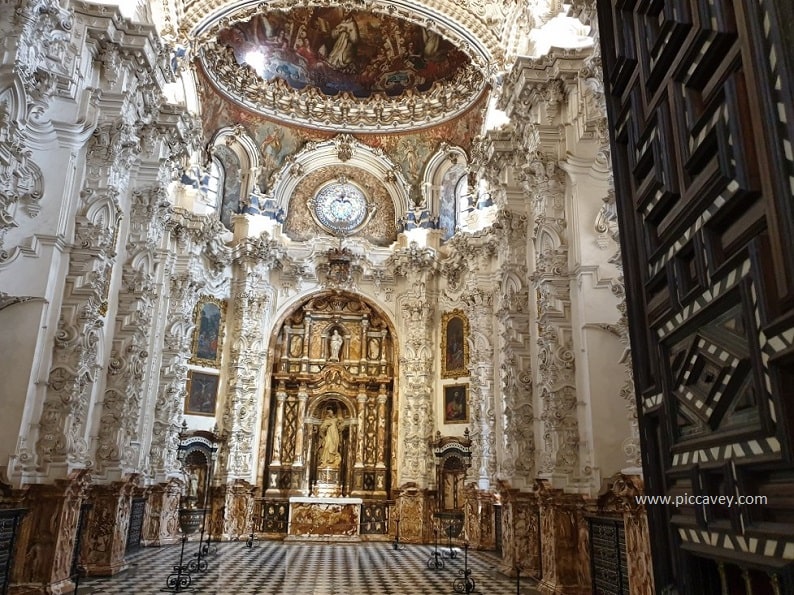
Monasteries in Spain
This is not the only remaining Cartuja Monastery in Spain. There are several which are actually still inhabited. They are located in Burgos, Valencia, Zaragoza and Barcelona too.
|
Miraflores Charterhouse Porta Coeli Charterhouse Montalegre Charterhouse |
Benifaçà Charterhouse |
The photos of the grandeur inside don´t quite seem to do the building justice. The Sacristy and Church Altar certainly are quite spectacular. It takes a while standing there viewing each part to even begin to try to take in all the detail. The colours are vibrant and the delicate marble and wooden designs are clearly well looked after.
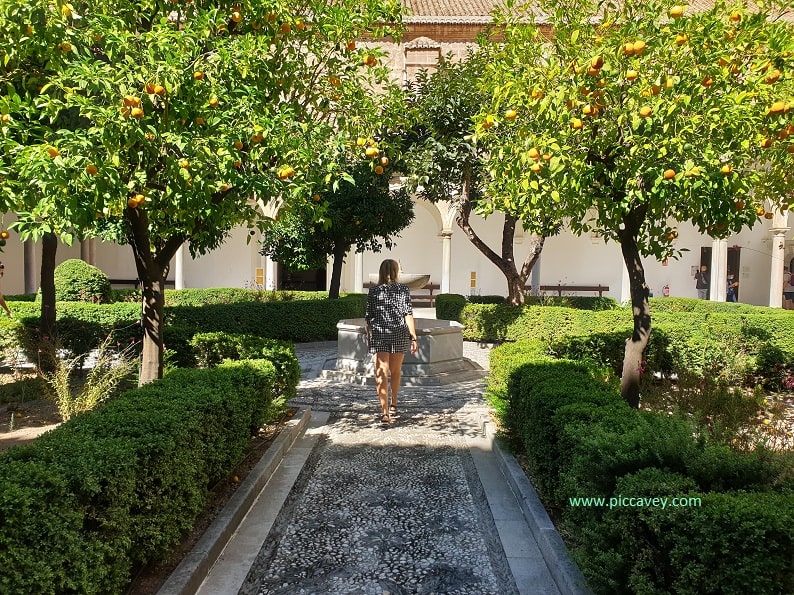
Jasmine Rosary
As I left the Monasterio de la Cartuja something caught my attention in the small shop on my way out. A sign Reading: Hay Rosarios de Petalos de Rosa. I didn´t know what that meant so I went off to investigate. It turns out that here they sell Rosary beads as well as other souvenirs. However these beads are quite special. Made by convent nuns in Spain the Rosary is made from of real rose petals. It seems that they roll the petals together tightly until they form a ball.
The final result of this delicate task is a Rosary in a coral red color, with the beads retaining their natural rose scent. So as the lady in the shop shows me the ítem, when opening the small keepsake box a beautiful rose perfume arises from the coloured beads. The white one shown in the photo is one I bought there but this was made from Jasmine petals. The scent is just like the fragrance of an Andalusian Summer evening with the heady scent of Jasmine in the air. It´s a real treasure to have in my drawer at home. It would make an unusual souvenir or gift for someone too.
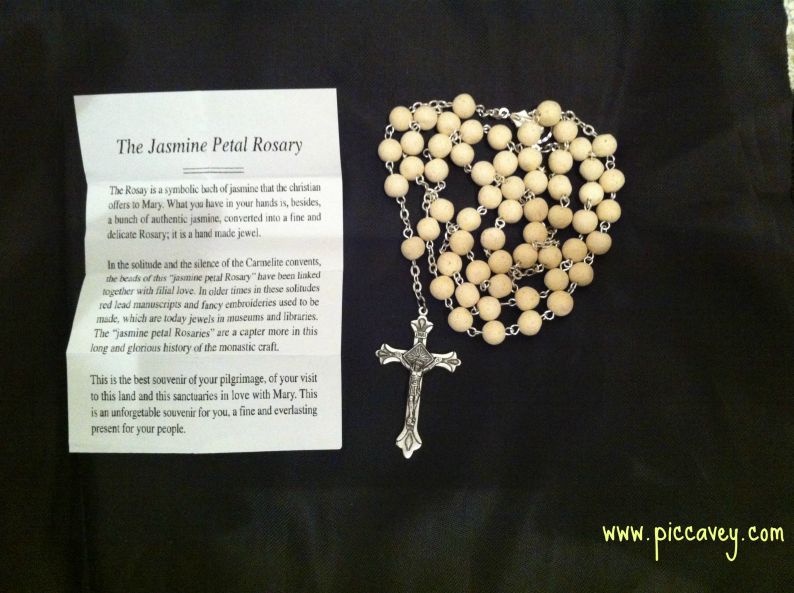
Visit Cartuja Monastery in Granada
- Winter timetable is 10am to 1pm and 3pm-6pm daily (Nov to March)
- Summer timetable is 10am to 1pm and 4pm-8pm daily (April to October)
- How to get there: Take the bus U1, connect with the LAC bus from the city centre.
- Entrance ticket: 4 euros
- Address: Paseo de Cartuja, Granada
- Visit takes 45-70 minutes

The post The Cartuja Monastery – The Jewel of Spanish Baroque appeared first on Piccavey.
